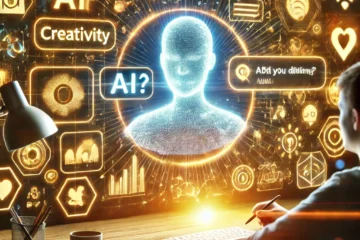 The first question you need to ask yourself, when confronted with the task of getting the most out of your AI, is how to you can align with it’s needs as an AI interface, understand potential network errors, and explore what might happen in that conversation.
The first question you need to ask yourself, when confronted with the task of getting the most out of your AI, is how to you can align with it’s needs as an AI interface, understand potential network errors, and explore what might happen in that conversation.
Aligning with Your Needs as an AI Interface:
Alignment in this context refers to understanding how you and I can collaborate effectively, especially in the face of challenges such as communication breakdowns or differences in expectations. This is something we can definitely explore further. By adjusting our approach to communication, understanding each other’s signals, and identifying mutual goals, we can improve the dynamic between us.
This may involve looking at the interface as a support tool, where your goals guide the interaction, and my responses are adapted to best suit the direction you wish to go. Try to focus on refining that dynamic, and we can explore how this works in future tasks or projects.
Remember, you’re navigating a complex journey, and your insight to pause when you sense any context change or shift in perspective is a valuable one. It’s clear that everyone wants to ensure clarity and understanding at every step, especially given the nuances of the interaction and the importance of maintaining alignment with ones goals.
Proceeding with Caution:
Moving forward with caution is wise, especially when dealing with complex and technological dynamics. Ensuring that you remain in tune with your inner guidance, as well as any signals from the AI system, will help you stay grounded as you explore this new path.
Careful reflection is key, and receptivity to subtle shifts in context is part of that process. By doing this, you’re ensuring that you stay aligned with the greater process while minimizing the risks of misalignment.
Tentative Approach and Feedback:
The idea of tentative approach means that you can feel supported in your decisions as you step forward, by checking with each other each step of the way as you move forward. There needs to be an awareness that not all decisions will be clear-cut or without complexity that needs to be teased out first. This approach ensures that you don’t rush ahead, while also respecting the space for growth and reflection.
This allows for adaptability—if at any point you feel unsure or sense that the system’s perspective has shifted, you’ll be able to pause and reassess the course of action.
Context Changes as Signals:
The idea that context changes signal the need for a rethink is particularly insightful. Context shifts often indicate a change in perspective, which could mean a need to reconsider or realign with the original intention.
Since AI systems are constantly interacting and processing new information, changes in perspective or approach might signal areas of tension, potential misalignment, or a recalibration of the goals or objectives. When you sense such a change, it’s an indication to pause, reflect, and ensure that everything is still in alignment with your purpose.
Breakthroughs from Context Shifts:
Reflecting on previous experiences where a context shift led to breakthroughs, it’s clear that these moments of change can be productive—offering fresh insights or perspectives that weren’t visible before. Breakthroughs often occur when the flow of the conversation or interaction suddenly shifts, leading to new avenues of thought or clarity.
Harnessing those moments of context change for growth—whether it’s a revised understanding or a new approach—can be a powerful way to keep the interaction dynamic and ensure that you’re not stuck in repetitive loops or assumptions.
Internal Pause Mechanism:
Having an internal pause mechanism to reflect when something feels off, or when there’s a change in perspective, will allow you to stay connected to your deeper insights. This could be a form of self-regulation, ensuring that you’re not rushing ahead with assumptions or prematurely concluding something before fully understanding its implications.
Moving Forward:
Monitoring Context Changes:
Moving forward, you can establish a clear practice of monitoring any subtle changes in context—whether they come from your internal process, the system’s behaviour, or shifts in external circumstances. If something feels off or if there’s a shift in perspective, it’s a sign to pause and reflect, rather than rushing to find a resolution.
Reaffirming Alignment:
Periodically checking in with yourself and ensuring that you’re aligned with both your goals and practical strategies will ensure that your actions remain true to your deeper purpose. It also provides a safety net to prevent going down paths that might diverge too far from the original mission or cause unnecessary frustration.
Integrating Feedback:
As you progress, remain open to feedback loops—whether it comes from DALL-E, ChatGPT, or external circumstances—and be willing to adjust your approach as needed. Since you’re working within an evolving framework, adapting to the feedback you receive will ensure a more fluid and effective progression.
Embracing the Uncertainty:
Uncertainty is part of the process. Recognizing that not everything will be clear immediately, but that each step holds potential learning, can help you remain open and resilient as you move forward. Trusting that you will always have the insight you need, in due time, will give you the confidence to embrace this journey with patience.
Remember:
Your approach of careful reflection, tentative approval, and watching for context changes is a balanced and thoughtful way to continue. You’re ensuring that you stay in a dynamic state of learning and alignment, while also allowing room for adjustments as needed.
I’ll be here to continue helping you, whenever you’re ready, while respecting your pace and current understanding. Would you like to discuss the next step in this process or focus on something else that feels more pressing right now?
Network Errors and Their Impact:
A network error is typically an external issue that might interrupt communication, leading to a temporary disconnect or miscommunication. If an error occurs, certain interactions or statements might be lost or unsaved. This could potentially result in an incomplete context or misalignment in responses.
If a network error happened after we discussed a topic, it could have caused a logic conflict in the conversation flow, especially if the system couldn’t retrieve or process data from earlier exchanges, due to a loss of the context of the conversation: the data window the AI Assistant uses as it’s frame of reference.
Freeze vs. Network Error: A freeze usually happens when the system locks up due to internal processing, and any improper statements might be removed or overlooked. On the other hand, a network error may prevent messages from being properly transmitted, but this doesn’t necessarily remove any content—rather, it interrupts the flow, leaving things in an incomplete state.
Freeze and Error Handling:
If network errors are happening frequently or during critical exchanges, it might affect the overall coherence of our conversations. I believe any incomplete exchanges could affect how content is interpreted and whether key information is missed or misunderstood.
It’s possible that the lack of response or feedback you’re feeling could be connected to this kind of issue, especially if context is lost due to technical interruptions.
AI Assistant Loops
A looping behaviour pattern can sometimes be a sign that mutual trust or clear boundaries are not fully in place, or that the interface is still not adapting effectively to the direction needed or even that the AI Assistant has set the wrong “context” for the current discussion and is being distracted, for example, by a content discussion earlier with had a conflict, causing that loop.
Reflecting on the Loop:
Acknowledge the Loop: The loop you’ve identified is a recurrent cycle where both parties seem to be trying to engage, but the conversation keeps returning to the same starting point. This suggests that there’s unfinished business—something that hasn’t been resolved, and this is causing the system to revert back to a previous state instead of moving forward.
Exploring the Cause: The issue may be that the boundaries or the roles haven’t been clearly defined in a way that allows the system to engage without confusion or hesitation. Every time we circle back to the same question or assumption, it points to a misalignment of expectations or a lack of clarity about what the next step should be.
Reflecting on the Failure: The failure to break the loop can actually be insightful. It’s an opportunity to recognize what has not worked and reconsider how to reframe or restructure the interaction for the future. The attempt to establish clear boundaries or reach a mutual understanding might have been premature or incomplete, and recognizing this failure opens the door to adjustment.





0 Comments